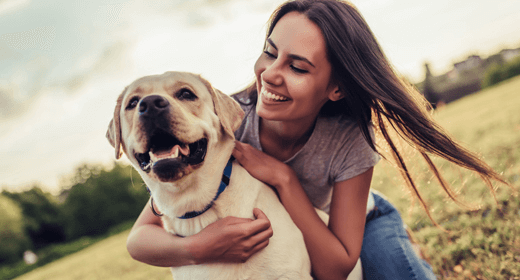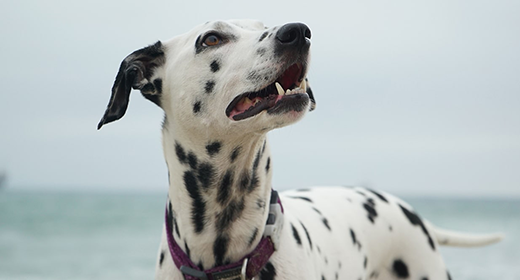

If you own a dog, chances are, you deal with the nuisance of shedding fur. Fortunately, there are some easy ways to help keep your dog's shedding to a manageable level.
If you own a dog, chances are, you deal with the nuisance of shedding fur. Fortunately, there are some easy ways to help keep your dog's shedding to a manageable level.
The main factor related to how much your dog sheds is which breed you own. Certain breeds, such as Yorkshire Terriers and Poodles, hardly shed at all, and are especially well suited for people who suffer from dander-related allergies. But if one of these hypoallergenic breeds is not your dog of choice, then chances are you deal with some amount of shedding. Here are some practical tips to deal with all of that hair.
Many dogs are seasonal shedders. As the temperatures begin to drop, so does the fur. Dogs shed their summer coats in the fall as their winter coats come in. The best way to deal with this is to be prepared. Brush your dog more often and vacuum more frequently. This will keep that extra hair from becoming too unmanageable.
Dogs also will go through their own version of spring cleaning. When the temperatures begin to rise in the spring, dogs will begin shedding that extra winter hair. Again, preparation is the key. Regular brushing and vacuuming will help you get through these “hairy” times.
Between the millions of strands of hair constantly growing, some breeds of dogs grow up to a total of 100 feet of fur per day! But, while your dog might not boast those kinds of hair-growth numbers, constantly replacing fur still places a demand on a dog’s system. Thirty percent of a dog's protein needs go toward hair growth. If a dog is not receiving proper nutrition, the dog's body will put the protein he's receiving toward maintaining muscle mass, leaving the coat to suffer.
A healthy, shiny coat is not only a sign of proper nutrition, but it also sheds less than an unhealthy coat. Premium dog food like IAMS™ ProActive Health™ provides dogs with the nutrients they need to keep their coat healthy, which means less shedding.
Brushing doesn't have to be a necessary evil. Train your dog to enjoy brushing, offering frequent praise during the process, and maybe even a treat at the end. This is easiest done from the time your dog is a puppy, but older dogs can be taught to enjoy brushing as well. The importance of brushing cannot be overemphasized. Just look at all the hair that ends up in the brush, and realize if it weren’t in the brush, it would be on your couch, floor, and perhaps, bed.
Be sure you're using the right kind of brush for your dog's coat. Breeds with thick undercoats need a specific type of brush, while longhaired breeds need a comb.
Last but not least, make sure to give your dog an occasional bath. Aside from the obvious benefit of having a clean, good-smelling pooch, your dog's coat will also benefit. Be warned though: Bathing your dog too frequently washes away the natural oil on his skin and coat, resulting in dry skin and, you guessed it, more shedding.
Committing the time to maintaining your dog's coat will help keep his shedding under control. Frequent brushing and vacuuming, and feeding your dog a balanced diet such as IAMS ProActive Health Adult MiniChunks will have you worrying less about an overabundance of hair and more time enjoying your furry friend.


Some of the best indicators of your dog's health are its skin and coat conditions. A healthy dog coat should be shiny and smooth, not rough or brittle. When it comes to healthy skin, your dog's skin should be soft and smooth, not greasy or flaky. Good nutrition is one of the main factors in maintaining your dog’s health in terms of a luscious coat and soft skin. Apart from that, your dog’s coat and skin can also be taken care of through regular grooming and skincare routines that will help keep its hair free of tangles and its skin free of any irritation.
If you think that achieving healthy skin and healthy coat in dogs is difficult, it’s time for you to learn more about dog health and grooming. Let’s explore more about how you can achieve a healthy dog coat and skin for your floof.
How do nutrients help my dog’s skin and coat health?
The first thing that any pet parent thinks of when it comes to maintaining their dog’s skin and coat health is grooming. While grooming plays a significant role in making sure that your dog has a shiny coat and soft skin, health plays a bigger part in ensuring your floof’s appearance.
If you have been grooming your dog well and are still wondering why its coat and skin are not appearing the way they should, chances are that there is an internal issue. A shiny coat and supple skin on the outside start with a healthy dog on the inside. If your dog has flaky, bumpy, dull, or dry skin/coat, it could be an indicator that something is wrong. The first thing you need to do is book an appointment with your vet and cross out any underlying issues.
The skin is the largest organ of any animal's body. For dogs, most of their skin is covered with hair that sheds regularly or is constantly growing, in non-shedding breeds. Just like how we require a balanced diet full of high-quality digest table food types to keep our skin and hair in a healthy state, dogs also need to maintain their diet and make sure that their body is receiving the right amount of calories each day to maintain energy levels. If a dog is not eating well or is eating poor-quality food, its body will take longer to eliminate the waste products and cause the kidneys and liver to work twice as hard.
That being said, good nutrition is key to a healthy dog coat and skin. A dog that meets its dietary needs every day will boast soft, supple skin, and luscious, glowing hair.
Many pet parents struggle with maintaining their dog's skin and find it to be one of the most difficult tasks. In reality, achieving goals as such is fairly easy, provided you feed your dog the right nutrients and make sure that its diet meets its bodily requirements. Here are a few things you can do to maintain a healthy dog coat and skin:
Your dog needs to maintain a complete and balanced diet to achieve healthy skin and a glossy coat. Proteins, fats, carbohydrates, minerals, and vitamins need to be fed to your dog in balanced ratios. It is very important for dogs to meet their daily calorie intake so that they have enough energy to facilitate new hair growth and skin cell turnover. If your dog's diet is not easily digestible or contains poor-quality ingredients, it may not be able to create enough energy through its diet. Make sure that everything you feed your dog contains high-quality ingredients and does not pose a risk to your dog's health.
There are so many supplements available in the market today. While you may get confused between jars and bags of supplements promoted for healthy coat growth in dogs, the majority of these products contain a source of omega-3 fatty acids combined with a range of other ingredients. Omega-3 fatty acids have scientifically proven to be one of the most beneficial supplements that you can give your dog for a glossy coat and smooth skin. Omega-3 fatty acids are not just effective anti-inflammatory agents but are also capable of bulking up your dog’s skin’s natural fatty acid barrier to add that extra shine.
Bathing your dog is extremely important as it will remove any dust, debris, dirt, and odour from its skin and coat. If there are any allergens on your dog's skin, a good bath is the solution to this irritating problem. Generally, dogs should be bathed every 2 to 4 weeks depending on their breed's needs. If your vet has advised a different routine, make sure you follow that. It is best not to bathe your dog too much because that can result in flaky skin and can dry out your dog's coat. If your dog has any allergies or does not react well to a dog shampoo or soap, consult your vet and find the right products for your floof.
Dogs that suffer from allergies experience inflammation in their skin that can cause redness and itchiness. This makes them itch and scratch which ruptures their skin barrier, allowing other infections to enter your floof’s body. Unfortunately, allergies cannot be cured and can only be treated. For this reason, it’s important to know how to manage your dog's allergies by consulting a wet.
Fleas and ticks are the most common parasite irritants that will affect your dog's skin at some point in its life. These parasites can cause intense scratching, chewing, and biting of the skin. These acts of self-inflicted trauma can lead to tears in the skin barrier, leaving your dog with crusty, irritable, and red skin. Additionally, some fleas and ticks carry illnesses that can be fatal. It is best to keep your dogs protected against these parasites all around by consulting a vet and doing the needful.
Maintaining overall health for your dog to achieve a shiny coat and soft skin is extremely important. Make sure your dog is being fed a balanced diet and the right nutrients. it is also important for your dog to have a good exercise routine so that it is just not lazing around the house. A dog that is well rested, well fed, and receiving the right nutrients is set to flaunt healthy dog skin and coat.
It is imperative that pet parents keep good food for dog skin in mind and also administer nutrients that aid in a shiny, glossy coat. Now that you know what you need to do as a responsible pet parent, you are all set to give your floof its best life.